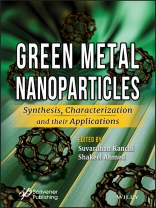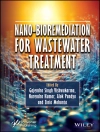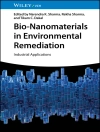This groundbreaking book uniquely focuses on the exploration of the green synthesis of metal nanoparticles and their characterization and applications.
Metal nanoparticles are the basic elements of nanotechnology as they are the primary source used in the design of nanostructured devices and materials. Nanomaterials can be manufactured either incidentally, with physical or chemical methods, or naturally; and the high demand for them has led to their large-scale production by various toxic solvents or high energy techniques. However, due to the growing awareness of environmental and safety issues, the use of clean, nontoxic and environment-friendly ways to synthesize metal nanoparticles has emerged out of necessity. The use of biological resources, such as microbes, plant parts, vegetable wastes, agricultural wastes, gums, etc., has grown to become an alternative way of synthesizing metal nanoparticles. This biogenic synthesis is green, environmentally friendly, cost-effective, and nontoxic.
The current multi-authored book includes recent information and builds a database of bioreducing agents for various metal nanoparticles using different precursor systems. Green Metal Nanoparticles also highlights different simple, cost-effective, environment-friendly and easily scalable strategies, and includes parameters for controlling the size and shape of the materials developed from the various greener methods.
Mengenai Pengarang
Suvardhan Kanchi is currently at the Department of Chemistry, Durban University of Technology, South Africa. He has co-authored about 35 papers and 11 book chapters in international peer-reviewed journals and edited Nanomaterials: Biomedical, Environmental, and Engineering Applications (Wiley-Scrivener 2018).
Shakeel Ahmed is working as an Assistant Professor at Department of Chemistry, Government Degree College Mendhar, Jammu and Kashmir, India. He obtained his Ph D in the area of biopolymers and bionanocomposites and has published several research publications in area of green nanomaterials and biopolymers for various applications including biomedical, packaging, sensors, and water treatment. He co-edited Chitosan: Derivatives, Composites and Applications (Wiley-Scrivener 2017).












